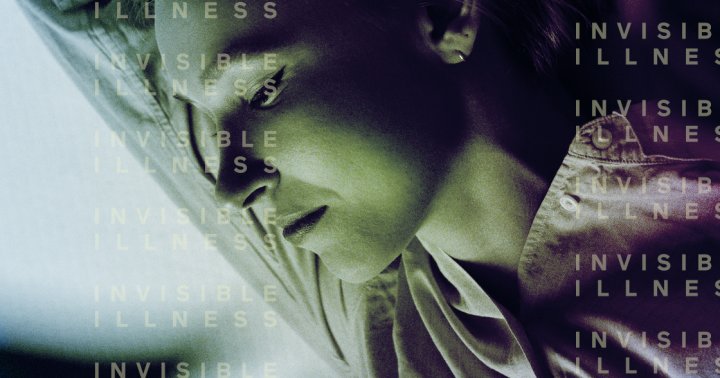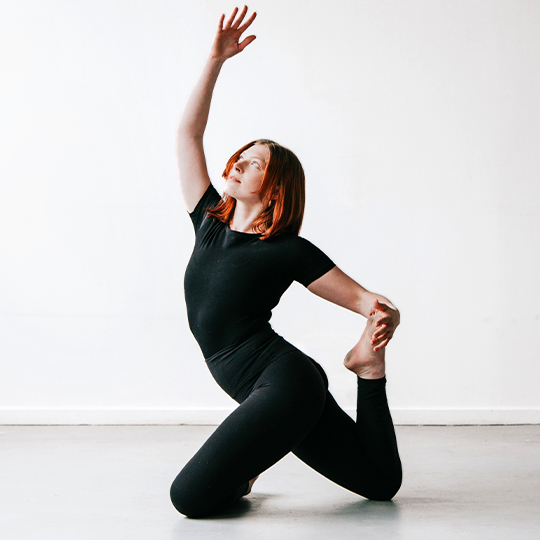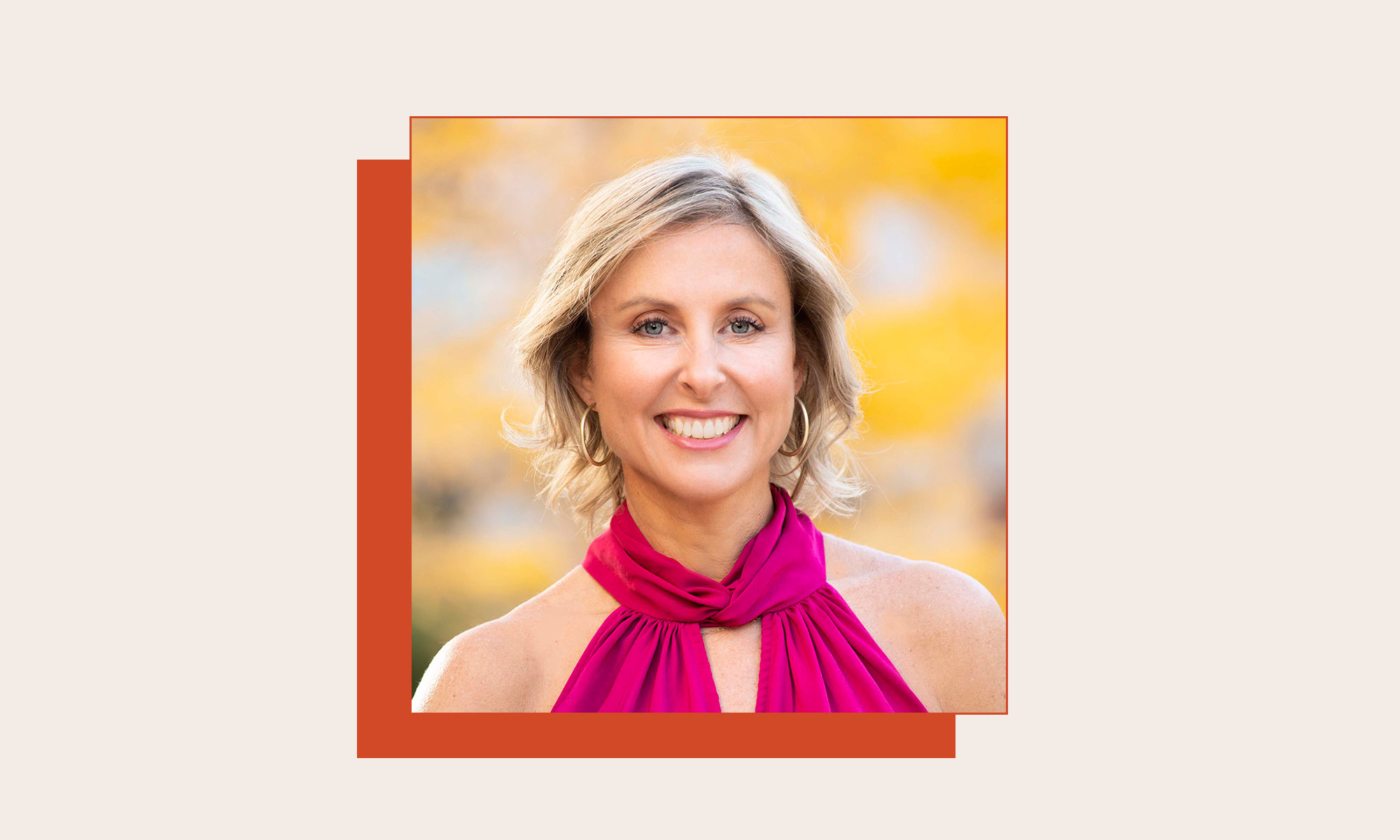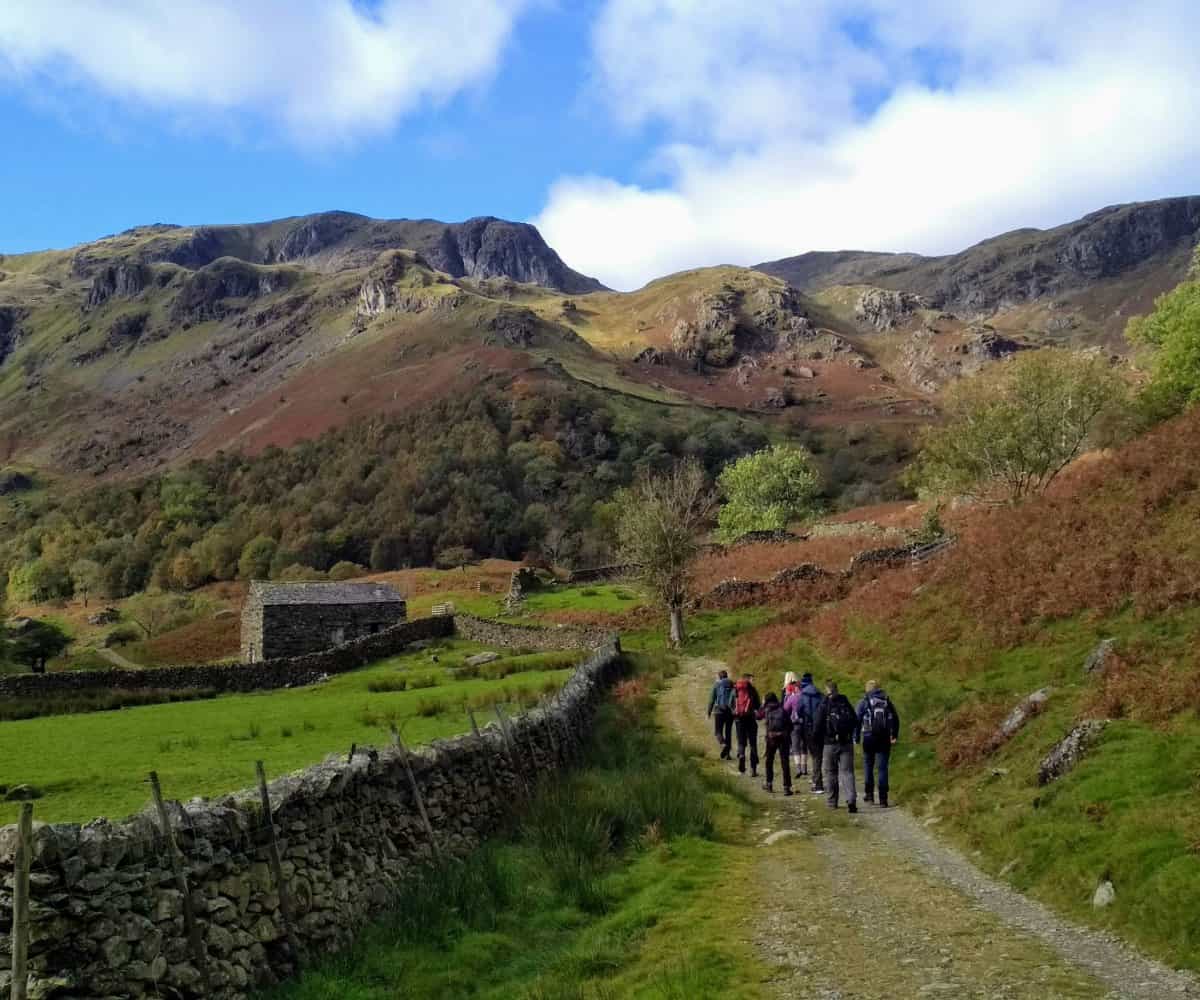5 Keys to Complete Mindfulness
What are the next steps for understanding complete mindfulness and its comprehensive benefits? Five experts in the mindfulness field explain. The post 5 Keys to Complete Mindfulness appeared first on Lion’s Roar.

1. Mindfulness Meditation: Train Your Mind to Change Your Life
by Shauna Shapiro, PhD
The widespread applications of mindfulness are based on a few general principles whose simplicity and power have sparked what has been called the “mindful revolution.” Yet with all its popularity—or because of it—certain aspects of mindfulness have become obscured or misunderstood. The science-based “Intention, Attention, Attitude” (IAA) model helps us see mindfulness in its full, multidimensional nature.
Writing conceptually about mindfulness, a nonconceptual topic, is antithetical to its very nature. Mindfulness has to be experienced to be known. However, words offer us a beginning, a finger pointing to the moon.
“When we see clearly, we can respond effectively.”
At its core, mindfulness is a universal human capacity that transcends culture, language, and religion. Although the concept of mindfulness is most often associated with Buddhism, its phenomenological nature is embedded in most religious and spiritual traditions, as well as in Western philosophical and psychological schools of thought.
The word “mindfulness” in the ancient language of Pali—Sampajanna—means “clear comprehension.” Mindfulness helps us see clearly so we can make choices grounded in reality and respond to life with wisdom.
But seeing clearly is difficult because the lens through which we view the world is blurred by our parents, teachers, relationships, and society. All of these influence our perceptions on conscious and subconscious levels. We come to see ourselves in a certain way, others in a certain way, life in a certain way. Rather than engage the fluidity of the present moment, our views become frozen and static, like a photograph rather than a motion picture. Often, they operate unconsciously. Even at times when we are aware of our conditioned responses, we can’t seem to shift them, try as we might.
Mindfulness has the potential to free us from these conditioned responses. It helps us remove the filters, biases, and preconceived ideas that shape our perceptions and cloud our consciousness. Mindfulness helps us choreograph our life through awareness of the way things are, rather than through generationally and culturally conditioned responses. When we see clearly, we can respond effectively.
To elucidate both the simplicity and complexity of mindfulness, we developed the IAA model of mindfulness, which is composed of three core elements: intention, attention, and attitude (Shapiro et al., 2006).
Intention
Looking at our intention puts us in touch with why we are paying attention. Intentions set the compass of our heart in the direction we want to head. They connect us with our personal vision, aspiration, and motivation.
Like the rudder on a sailboat, our intentions keep us on course, reminding us again and again of what is most important. This is why intention is so valuable. It is our personal blueprint, helping us stay connected with what we value most in life so it is not lost or betrayed. Our intentions wake us up from our automatic pilot and put us back in choice.
Intentions are not vague, mystical concepts. When you set an intention, it leads to a whole cascade of neurochemistry that helps support learning and neuroplasticity.
Here’s how it works: When you set an intention, it releases dopamine, the neuromodulator of motivation and drive. This then catalyzes the release of epinephrine, responsible for alertness and energy, and acetylcholine, responsible for focus and attention. By focusing on your intentions, you can set in motion a powerful neurochemical system of support, one that will optimize your ability to create lasting change in your life.
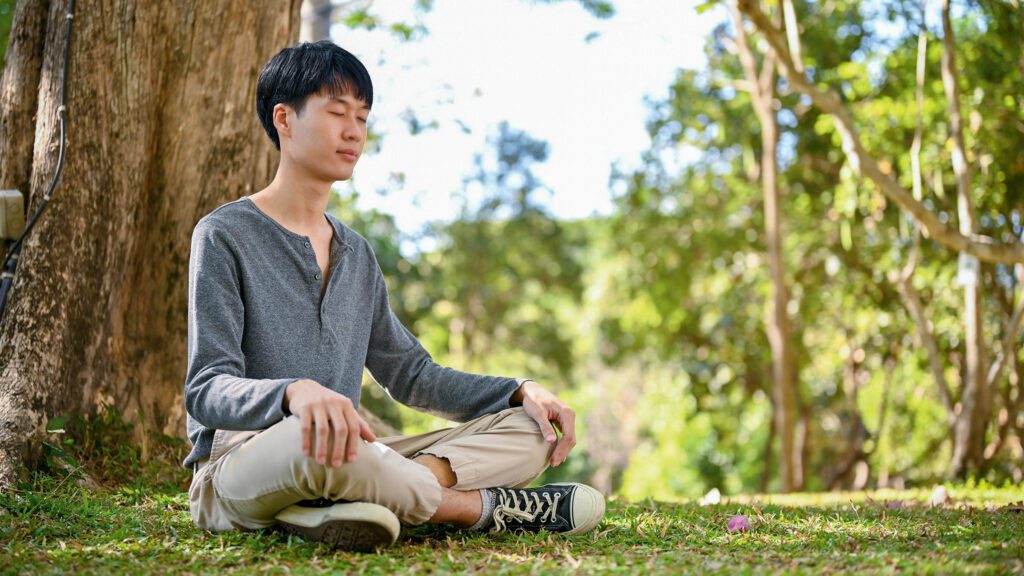 Photo by Bongkarn Thanyakij / Alamy Stock Photo
Photo by Bongkarn Thanyakij / Alamy Stock PhotoAttention
A second fundamental component of mindfulness is attention, learning to train and stabilize our focus in the present moment. In the context of mindfulness practice, paying attention involves observing the operations of one’s moment-to-moment internal and external experience.
This is what Edmund Husserl (1962) referred to as a “return to things themselves”—simply attending to experience itself, as it presents in the here and now. In this way, we learn to attend not only to the surrounding world, but also to the contents of our inner reactions to the world, moment by moment. Often our minds propel us into the future or suck us into the past. Mindfulness helps us return our attention to the present moment.
To see how training our attention works, try focusing your attention on the sensations in your right hand. Notice how you suddenly have sharp awareness of your right hand. A moment ago, your right hand was not in your awareness. Now it is. Shift your attention to your left hand. Notice how you now have awareness of your left hand. Learning how to intentionally move this “spotlight” of attention can alter the quality and direction of our lives.
This is not to say that sustained focus in the present moment is easy, particularly in the modern world. Scientists have measured the amount of data that enters the brain and found that an average person living today processes as much as seventy-four GB of information a day (like watching sixteen movies), through TV, computers, cell phones, tablets, billboards, and other sources of information.
Not surprisingly, this firehose level of input hinders our capacity to pay attention. As cognitive scientist Herbert Simon (1971) eloquently noted, “What information consumes is attention. A wealth of information means a poverty of attention.” As we train and stabilize our attention, we can become more effective at managing the daily data influx. We begin to see the present moment more clearly and make wiser choices in line with our intentions and goals.
Attitude
The third element of effective mindfulness is attitude—paying attention with an attitude of kindness and curiosity. This welcoming, open attitude enables the learning and information processing areas of the brain to function more effectively. The result? We can more objectively evaluate our situation so that we can respond effectively.
Our ability to bring an attitude of compassion and curiosity to all situations becomes especially crucial in difficult times. When we learn to meet pain (or fear, anger, loneliness, boredom, guilt, jealousy, shame, embarrassment, or disgust) with kindness and curiosity, we become our inner ally instead of our inner enemy.
Think about how you would treat a young child in pain. Would you say, “Stop that! What’s wrong with you?” Or would you embrace this suffering child and say, “Sweetheart, this is hard. Tell me about it. I care.”
This attitude of kindness and curiosity toward our inner and outer experience does not sugarcoat our emotions or try to suppress or change them. Instead, it allows us to experience them in a direct, yet safe and compassionate way. Paradoxically, by welcoming our experience without initially trying to change it, we actually change everything.
Neuroscience backs this up. Studies show that when we are judgmental and shaming, the learning centers of the brain shut down, shuttling resources to our survival instincts and robbing us of the resources we need to respond effectively. In contrast, an attitude of kindness strengthens the learning centers of the brain, bathing our system in dopamine, the neuromodulator responsible for learning and motivation (Rigoni et al., 2015). This expands our perspective and opens us to greater creativity and resourcefulness.
These attitudinal qualities do not add anything to the experience itself, but rather infuse the container of attention with acceptance, openness, caring, and curiosity. For example, if impatience arises while practicing mindfulness, the impatience is noted with acceptance and kindness. However, attitudes are not meant to substitute for the impatience or to make the impatience disappear—they are simply the container. These attitudes are not an attempt to make things be a certain way. Rather, they are an attempt to relate to whatever is in a certain way.
Mindfulness is the awareness that arises through the synergy of all three of these elements—intention, attention, and attitude. These elements become the “tongue” of mindfulness that fully tastes each moment. Through being present with experience in this way, insight arises. We see into the nature of things and realize fundamental truths: that everything is impermanent; that suffering is caused by confusion, leading to fear, greed, and hatred; and that everything is connected, nothing is separate. These insights begin to inform how we perceive and live our lives.
At the deepest level, mindfulness is about freedom—freedom from reflexive patterns, freedom from reactivity, and, ultimately, freedom from suffering. We see that what we experience as our separate sense of self is simply awareness happening. This is the essence of the nondual nature of mindfulness—of no separation between ourselves, others, and all things—exemplified by this beautiful teaching by Ram Dass:
When I forget who I am, I serve you.
Through serving, I remember who I am
And know I am you.
Shauna Shapiro, PhD, is a clinical psychologist who has spent more than thirty years studying the benefits of mindfulness and compassion. She is the author of Good Morning, I Love You and Rewire Your Brain.
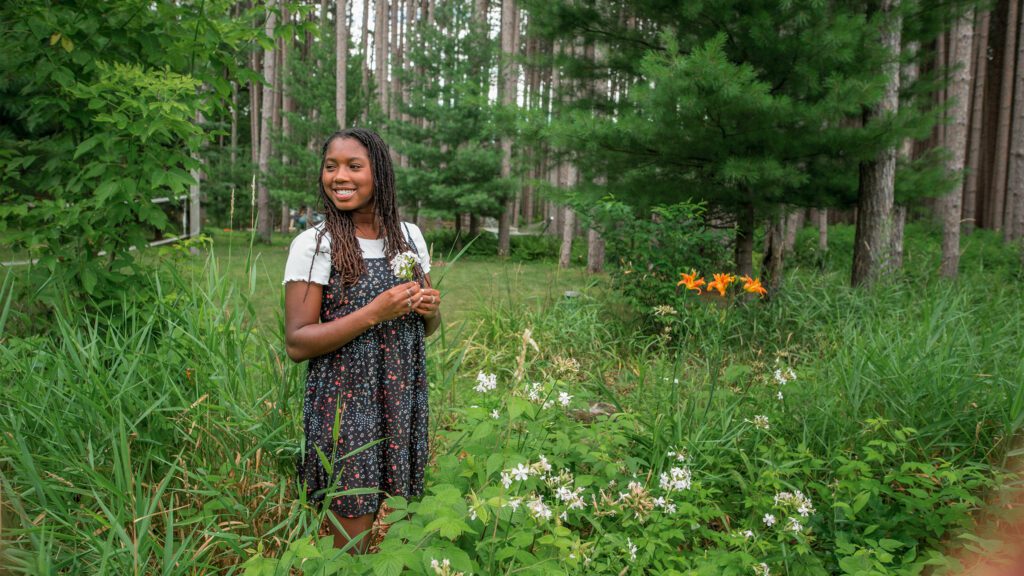 Photo © Gabi Bucataru / Stocksy United
Photo © Gabi Bucataru / Stocksy United2. Insight: The Power of Seeing Reality Clearly
by Gullu Singh
Mainstream mindfulness practice typically focuses on techniques to calm, relax, and focus the mind. This can be done by anchoring the attention on the breath or another focal point and letting go of everything else. These practices demonstrably improve well-being and reduce stress.
A good mindfulness teacher will also encourage meditators to use their practice to cultivate positive qualities such as confidence, patience, determination, and kindness. We can refer to the development of relaxation, calmness, and positive qualities as “cultivation practice.”
There is another important side of meditative practice that is underemphasized in mainstream mindfulness. This is the development of insight or wisdom. Using the power of clear observation we develop through mindfulness, we can gain a deeper understanding into the nature of reality and our own being. While cultivation practice does help us feel better, relax, and be better people, it is this insight practice that ultimately liberates us from mental reactivity and suffering.
“Through the power of self-awareness, there is no limit to what we can discover that leads to greater wisdom.”
Insight practice invites us to continually examine what is happening in our mind, facing discomfort to understand our experience and its causes. This demands courage, confidence, and persistence.
As a beginning meditator, I learned to silently label my thoughts “thinking,” “planning,” or “remembering” when they arose. One day, I suddenly realized that all of my thoughts involved planning. Of course, I knew myself to be a planner, but this was a sudden revelation of the magnitude of this force in my life. Further observation showed this way of thinking was intertwined with a constellation of tension, restlessness, and anxiety in my body.
This insight has made me more aware of planning thoughts and their associated physical sensations, helping me to avoid being compulsively driven by those thoughts out of habit. The insight into this pattern reduced its power.
Through the power of self-awareness, there is no limit to what we can discover that leads to greater wisdom. But it is helpful to have some pointers about areas that are ripe for exploration.
One helpful thing to notice is that when an experience is unpleasant or painful we often tense up or have strong aversion, which causes a tightening in the mind and makes an already unpleasant experience even worse.
Conversely, when an experience is pleasant, we might become attached to it, crave it, or worry about losing it, all of which also cause mental constriction. Of course, we might know this intellectually, but paying close attention to this process, which is happening in every moment, can show us how insidious it is in undermining our sense of well-being. Realizing and truly feeling the pain of this process helps us loosen our grip on our preferences, which leads to less reactivity and greater well-being.
Another good place to investigate, which is revealed with even the most cursory inward examination, is how experience is a constantly shifting cascade of thoughts, emotions, and sensations. No two moments are the same, and no experience lasts.
Observation of change can be unsettling initially. Typically, we struggle against this change and thereby create more discontent. Cultivating more stability in the mind acts as a counterbalance to change that allows us to embrace it more fully. This insight is complete when we truly grasp the truth of impermanence and the utter futility of trying to cling to or resist anything in this ceaseless flow.
Society’s usual recipe for happiness is to maximize all that is pleasant in our lives while pushing aside, denying, or suppressing the unpleasant. Unfortunately, it is hard to get conditions so perfect that we don’t suffer, and when we occasionally succeed, the conditions do not last.
The insight here is that experiences have no lasting satisfaction due to their fleeting nature and because the mind’s desires can never be fully sated. Seeing the futility of this acquisitional paradigm can be destabilizing or even depressing, so we must continue to cultivate well-being to keep the mind in balance. But in the end, the insight that things are not ultimately satisfying frees us from this exhausting project of constant rearranging of our lives to try to get the perfect conditions. It invites us to find contentment in the moment—in the process of living rather than the results we seek.
The most elusive and yet most profound insight comes from observing how our usual sense of self creates suffering and struggle. We cling to the self as if it were a fixed, solid thing that must be constantly tended, defended, and satisfied. We can see this in the way we constantly compare ourselves to others, in our desperate need to be seen in a particular way (smart, funny, athletic, etc.), and the fierce defense we mount when our identity feels threatened, like needing to be “right” in arguments.
We all know that this painful self-consciousness and self-preoccupation often fades in wordless moments of beauty in nature, during intimate connection with another being, or when we are fully absorbed in a wholesome activity. These experiences offer us a glimpse into a deeper truth: the sense of self is also constantly in flux. It is a process, not a solid thing, and there is no ultimate satisfaction to be found here.
The renowned meditation teacher Gil Fronsdal suggests that cultivation practice and insight practice must be in balance. It can be discouraging when insight is overemphasized, because many of the insights we have point to the reasons why we suffer. Conversely, if cultivation is overemphasized, then our practice can become an endless self-improvement project, and that doesn’t bring a lot of happiness either.
Cultivation practice and insight practice are mutually supportive. Finding the balance between them is an art, and practitioners who do so will be well rewarded. By combining the cultivation of calm and inner strengths with seeing how the mind constructs suffering, we embark on a more complete and worthwhile path of practice—and life.
Gullu Singh is an authorized teacher of Mindfulness-Based Stress Reduction. A corporate attorney for thirty years, he offers mindfulness training in law firms and other businesses and mindfulness mentoring to individual practitioners.
 Photo by Caleb Jones
Photo by Caleb Jones3. Ethics: Living Our Values
by Rhonda V. Magee
The practice of discerning right from wrong and applying what we learn in everyday life, what we might call ethics-in-action, is seen by many an inherent aspect of mindfulness. Perhaps for this reason, many assume that mindfulness provides enough of an orientation toward ethics that we don’t need to spend much energy focusing on it. We teach interconnection and compassion, many seem to say, and ethical behavior “off the cushion” flows naturally from that.
Maybe. But I believe there is value in emphasizing the ethical underpinnings of mindfulness. Doing so might better enable the kinds of sometimes risky actions—speaking truth to power; courageous storytelling; living and working across lines of difference; organizing against overconsumption, violence, and ignorance; and more—that are often necessary to grow and sustain capacity for living more compassionately together.
So why, even in the face of the growth of conflict and aggression right alongside the growth of mindfulness in our world, do we so often hesitate to center on ethics?
It could be due, in part, to uncertainty about what ethics means. My understanding of it was no doubt shaped in the lap of my mother, Ruth, whose views were no doubt shaped in roughly the same place of her mother, Nan, and by the teachings of the prophetic Christianity they practiced—teachings that made it hard to make a permanent enemy of any of God’s children.
Given this upbringing, I tend to expect mindfulness-based meditation and communities to assist us in experiencing a planetwide sense of our responsibility toward one another. So I was heartened when I learned that, in the teachings of the Buddhist lineages from which mindfulness was born, practitioners are invited to practice with a core set of moral commitments or “precepts,” as a foundational part of the journey. Often presented as vows, they implore us to practice avoiding hurting others, lying, stealing, sexual misconduct, and intoxication.
In the cultural West, the legacy of the countercultural revolution in the mid-twentieth century (promoting individual freedom for everyone all of the time) set us up to be wary of other people’s morality. To this day, we are often allergic to following someone else’s rules. So perhaps it is not so surprising after all that, even in a time of unprecedented interest in mindfulness as a way of being in the world, the kind of mindfulness we see often appears stripped from its essential ethical foundation.
“Becoming aware of the consequences of our choices — and living differently as a result — is the true power of mindfulness in the world today.”
I do not see the precepts as a call to adhere to rules, to gain approval as a “good meditator.” I see their value in their practical effect. They remind us to pay close attention to why and how we do these things, and to just how they affect others. They help us incline ourselves toward more caring behavior in response. Practicing the precepts, we experience the ethical principle of not causing harm as a touchstone in daily life. We come to know it not as an “add-on,” but as the very foundation of mindfulness.
I believe that we need to put the ethical principle back. Mindfulness can remind us of what we learned as children about how to tell the difference between right and wrong. This will look a bit different for each of us. For me, for example, the “ethics in a nutshell” coming out of my mindfulness practice is infused with what feels to me like soulfulness. When contemplating whether or not to take any given action, I ask, will it cause suffering in myself? In the world? And more specifically, will it cause more harm among those who’ve already suffered more than their share? Or will it help diminish it?
This deceptively simple inquiry practice won’t solve all of our problems. But it will help keep us mindful of the fact that we live in a world with others, a fact replete with moral implications.
Here is the next rub. Even if we are willing to practice for ethical living, we come across the hard truth that doing so is not easy. And what about figuring out what truly compassionate steps to take in response? Often, this is more difficult still.
For these reasons it is clear that in addition to exploring what ethics is, we need support in discerning how to make good on applying ethical insight in our everyday lives.
Does the way we practice and teach mindfulness help us do that? Can it help us do it more, and better?
I think so. To deepen its impact, though, we need more than the teachings and practices. This is where communities of practice come in.
Communities of practice—places wherein we can consistently work with real human beings to meet conflict and difference as it arises in and around us—give us the organic structures of experience and support that we need to live ethically. They require that we soften our tendencies toward overinvesting in ourselves to the detriment of others. And in these times, when we can see all around us the temptations of tribalism and self-focusing as means of responding to fear and dread, these and other teachings, practices, and experiences that disrupt the temptations of self-ing could not be more timely or important.
To support us in softening the temptations of othering, we need a mindfulness capable of looking at the barriers to caring across lines of real and perceived difference. Cultivating such mindfulness benefits from actually being in diverse communities. Even the Buddha’s applications of mindfulness extended to awareness of the external injuries caused to socially different others, for example, by the system of caste. Even then, the ethics of mindfulness pointed practitioners toward addressing the variety of everyday injuries to dignity and concern for others that our cultures and subcultures make seem natural and necessary.
Thus, Buddhist history suggests that living with social and cultural difference helps attune us to the ways that our cultures make “normal” casual, everyday, and systemic harm to vulnerable “others.” It suggests that mindfulness, practiced rightly and alongside others, prepares and inspires us to address it. And looking back, I can see how my efforts to live ethically in the world have been strengthened by both working and living in multicultural communities. To this day, I learn about ethics from the inside out while moving through the negotiations, temporary pauses, intermittent battles, reframing of problems as possibilities—and more—that decades of living in differently diverse communities demands.
Over the years of actually struggling with others, I’ve meditated on how being with difference assists us in minimizing harm as we struggle-while-changing, together. Because when it comes to mindfully discerning what to do about conflicts in the broader world, cultivating the ability to sit with the perspectives of people whose experiences differ from our own is essential.
Taking inspiration from those who have gone before, I read about spiritual justice activists whose lives suggest that they practiced like this. And it gives me reason for hope. Studying the very embodiments of ethics, the exemplars of the good, the unselfish, the needlessly kind across a range of religious traditions—people like the Buddha, Jesus, Martin Luther King Jr., Grace Lee Boggs, Thich Nhat Hahn—one sees that they, too, moved between worlds, and among those at the margins of their societies. They were as often as not working with those different from their original “tribes.” They navigated worlds of different perspectives and values. And the actions they took were tempered by—elevated by—a capacity to see themselves in the eyes of people who did not look like them, and whose lives had taught them different views on questions of right and wrong. This is the ethics of mindfulness in action.
A commitment to such ethics has never been more important than in the multicultural societies in which so many of us live in the modern era. It helps us combat the othering in our midst, to see through the dehumanizing messages with which we are constantly bombarded. They help us live well, side by side with people who are different from ourselves. Cultivating this aspect of mindfulness, then, is critical in these times, when doing the opposite has diminished the communing together that leads to its natural arising, and led to increased tribalism and other pathways toward its very opposite.
Our mindfulness can support us in considering where, when, and how to act for justice, and in creating new institutions, policies, and practices that reduce suffering. It can support us in doing all that will be necessary to keep mindfulness from morphing into a subtle tool of oppression.
And how, more precisely, can this be so? Well, rather than offer a specific prescription, I suggest that our whole practice, in these times, must be energized by, grounded in, questions like this. The answers we need to explore, the ones that reflect the values and insights of mindfulness, will arise when we bring insight to our socially embedded lives—to the particular histories, lingering inequities, power differences, thinly veiled melancholy, deferences, and resentments—all while keeping our hearts open. These answers will be flexibly attuned to the fact that the changing situations in which we find ourselves matter—and, that they are not static. Everything is always already changing, in ways we variously experience as good, bad, or neutral. Practicing ethics in diverse communities helps us see, in these changes, that the reality of multiple and conflicting experiences will not break us. Instead, from such experiences, novel possibilities emerge.
The teachings underlying mindfulness reveal that becoming aware of the not-so-obvious but nonetheless harmful consequences of our everyday choices—and practicing, courageously, living differently together as a result—is the true power of mindfulness in the world today. And because doing so is not always easy, ethical practices invite working toward repairing the harms we—even partly, even unintentionally—cause. When, as a result, we disrupt those everyday habits and conventions—when we choose caring for others, consuming less, telling more of the truth, respecting others’ things, respecting others’ bodies and sexual integrity, and sobriety—we feel the changes in our hearts, minds, and bodies, in the very seat of consciousness itself.
We know from our experiences that expanding our presence, experiencing more of these sense impressions, feelings, and being “called out” or “in” will not always be easy on us. It will not always feel like joy, or spa-like bliss. But mindfulness is about deepening wisdom through awareness of sensations, feelings, and thoughts and developing emotional intelligence. We practice becoming friendly with the discomfort that flows with learning and growing. However challenging, we learn that we must move at careful speeds through all such discomfort, and in thoughtful directions. Our patience ripens as we pause, our agility strengthens as we adjust, our courage arises as we take what life-affirming actions we can. And our freedom expands as we let go.
Our hesitancy to center on ethics as part of the very practice of mindfulness does more than limit our experience of freedom. It gives the often very subtle and most socially acceptable forms of greed, hatred, and delusion shadowy room within which to roam. Practicing with the ethical rules in interactions with others helps soften the parts of ourselves that can too easily privilege our own comfort over that of others, especially in the face of real change. And practicing ethical engagement in diverse communities of so-called Others gives us real-world experiences that move and change us, replacing the shadow in and around us with the light of awareness.
Being mindful of not only obvious, but also subtle forms of greed, hatred, and ignorance in our lives and society nurtures the ethical roots of engaged mindfulness. Exposing ourselves regularly to the dimensions of harm that move through conventional social habits and processes of identification can help us when we meet the “stranger”—whether within ourselves and families, in our communities, in the café down the block, or in the newsreel or social media post from the other side of the world. And it is being in regular and well-supported contact with the other that can help show us just how to meet the stranger in the spirit of planetary loving-kindness that is, I believe, the ultimate gift of mindfulness in these times.
Indeed, this is why when I stand for a socially attuned and ethical form of mindfulness, I stand for seeing more clearly what supports its organic arising. I stand for what binds us together as one quilt, strengthened by the warp of conflict and weft of new cultures, unexpected reversals, and beginning again.
The quiet ethical revolution I call for here is, then, so much more than a renewed call to attend to the old rules. It’s a way of being and doing, capable of stitching together the patches of our inherent already-belonging. This might better be called “ethics-ing.” It’s a way of seeing our mindfulness practices as the means of cultivating moral imagination. It can help us explore what the pop icon Beyoncé Knowles-Carter encouraged millions to practice in a recently released song—standing together and standing for something, even when we can barely stand one another.
I end this essay with an explicit call to ethics-ing-in-action. I pray that the light of awareness illuminates what caring-across-difference looks like, in the very communities where we live and breathe. Because change itself is calling for just such a renewed line of sight. And when we find ourselves at untraveled crossroads, may a reconceived mindfulness—enriched by the soulful, creative, and compassionate heart-qualities that support making change ethically—increasingly ground, uplift, renew our views, and dance with us there.
Rhonda V. Magee is the author of The Inner Work of Racial Justice: Healing Ourselves and Transforming Our Communities Through Mindfulness. She’s the founding director of the Center for Contemplative Law and Ethics at the University of San Francisco.
 Photo © valbar STUDIO / Stocksy United
Photo © valbar STUDIO / Stocksy United4. Love and Compassion
by Tara Brach, PhD
If you were at the end of your life looking back, what would matter most to you? For me, it would be the moments of loving, of tender connection with others and this living world. We love so much—life, truth, beauty, awakening, love itself. This is what infuses our lives with meaning. Whether we call it compassion, kindness, or just love, it is an essential part of the path to a happy, fulfilling life and a better world.
Yet, according to a palliative care worker I know who has sat with thousands of dying people, people’s most common end-of-life regret is not having lived a life that was true to themselves, true to their own heart. Rather than opening to the joy of loving presence, we humans tend to be self-absorbed and anxious. There are good reasons for this. Because of our basic survival instinct, we have an innate bias toward the negative, focusing on potential threats and problems. This can lead to being defensive, judgmental, and aggressive—toward our inner life and others.
So although love is a natural, hardwired capacity in us, living with an open heart requires intentional cultivation. For many people, learning to hold our own being with compassion is the first step.
“Mindfulness and compassion are like two wings of a bird — we need both to fly, to be free.”
I was twenty when I became aware of what I now call “the trance of unworthiness.” I was fixated on all that seemed wrong with me—my personality, insecurities, weight, behavior in relationships, everything. It was impossible to love myself in the face of this perceived badness until I discovered the key to self-compassion: acknowledging that I was hurting. I needed to be touched by the reality that I was suffering.
Here’s an analogy I find helpful in developing compassion toward ourselves and toward others. Imagine you are walking in the woods and see a small dog by a tree. As you bend down to pet it, the dog lunges at you with bared teeth. How do you react? Would you be angry? Fearful?
Now, what would happen if you noticed that one of the dog’s legs was caught in a trap, and they were reacting out of vulnerability and pain. Your relationship with the dog would shift dramatically, wouldn’t it?
The same is true of us. Whenever we behave in unhealthy or hurtful ways, we are suffering. It’s as if our leg is caught in that trap. Seeing the hurt behind the behavior softens our heart. As we bring a mindful awareness to our vulnerability and suffering, we naturally cultivate a compassionate heart toward ourselves.
The challenge is that we’re conditioned to avoid our vulnerability—no one wants to experience raw, unpleasant emotions! So instead of feeling our feelings, we can spend days, even decades, spinning in judgment and blame, anxiety and/or depression.
I experienced this kind of stuck-ness during an extended period of an unidentified illness, which, thankfully, has since resolved. Yet, as I spiraled into an increasingly limited life, I was depressed and filled with harsh self-judgment. Here I was, a spiritual teacher being a bad sick person—small-minded and self-centered, irritable and impatient with others.
One morning while meditating, I said it out loud: I don’t like myself. I don’t like being me. After decades of teaching radical acceptance, that got my attention! I asked myself a powerful question: “What am I unwilling to feel?” Along with the deep pain of shame, I saw that my heart felt squeezed by intense fear—fear of uncertainty, fear of losing all I loved about life. My leg was caught in a trap.
I allowed myself to lean in and open mindfully to the clutch of fear. As I did, the fear gradually morphed into grieving the loss of cherished parts of my life: hiking, swimming, the pleasure of connecting with others, and so much more that brought me joy. Finally, I could weep. It felt as though my spiritual heart was holding my human heart, attending to the pain with profound tenderness and compassion. Inhabiting this vast heart space let me know I could love myself and this living, dying world, no matter what. It deepened my trust that loving presence is more the truth of who I am than any story about a sick, deficient self.
Mindfulness and compassion are often referred to as two wings of a bird because we need both to fly, to be free. For me to awaken compassion, I needed to bring a clear and direct mindful attention to the fear I was feeling, to how my leg was in a trap. And for that attention to be full and intimate, it needed to be accepting. Mindfulness needs to have the gentleness and warmth activated by the wing of compassion. These wings are entirely interdependent: there is no clear seeing without a nonjudging openness, and there is no felt tenderness, no responsiveness, without direct embodied contact with what is arising.
Compassion is a game changer, in both our own lives and our relationships with others, because this tender responsiveness softens the armoring around our heart. It dissolves our feelings of separateness and reveals a larger field of loving awareness—a oneness that is our shared source with all beings. The realization of intrinsic belonging to each other naturally arouses an inclusive and engaged sense of compassion as we move through the world.
This openheartedness habitually contracts when we feel fearful and stressed. We regress into perceiving others as separate from us and potentially threatening. They are “unreal others,” not conscious, feeling beings like us. Widening the circles of our compassion in a sustained way requires bridging these divides with ongoing, purposeful cultivation of caring.
Civil rights leader Ruby Sales said her work deepened immeasurably when she started asking the question, “Where does it hurt?” Sometimes, she actually posed the question to another person, and at other times it was an inner contemplation. For instance, when she encountered someone acting from racial hatred, she asked herself that question and was able to see that person trapped in painful societal conditioning and fear. This opened her to a wise compassion, rather than the reactive anger that inevitably exacerbates the sense of separation.
There is no more beautiful aspiration than to cultivate this kind of engaged, loving presence in our daily lives. As my friend and fellow teacher Frank Ostaseski suggests, each morning we might inquire: What is love asking from me today?
We may feel called to mindfully tend more closely to the suffering of a vulnerable human or nonhuman population, and find some way to express our care. Or, perhaps we might seek to help a friend trust in their own goodness. Norwegian poet Arne Gaborg wrote, “To love someone is to learn the song in their heart and to sing it to them when they have forgotten.”
We might also deepen our attention to our own loneliness, anxiety, or hurt, and then place a hand over our heart and tell ourselves, “It’s okay. I’m here. I am held in love.” Just holding the intention of kindness toward ourself softens the heart and opens the door to life.
As we awaken our hearts, our lives increasingly become an expression of love. This is the answer to our deepest longing, and a gift to our precious, hurting world. Loving is what allows us to join hands and, together, face the existential challenges of our times. Loving allows us to see past all conditioning to our basic human goodness, and to honor and celebrate the natural sacredness that shines through all life forms.
Tara Brach, PhD, is a clinical psychologist and author of Radical Acceptance and Radical Compassion. She’s co-leader with Jack Kornfield of the Mindfulness Meditation Teacher Certification Program.
 Photo by iStock.com / Yellow Dog Productions
Photo by iStock.com / Yellow Dog Productions5. Community: The Healing Power of Connection
by Robert J. Waldinger, MD
Science now confirms what philosophers, poets, and lovers have known for millennia—that our connection to other human beings is both an essential truth of our existence and a pillar of happiness, health, and longevity.
In the Harvard Study of Adult Development, of which I am the director, we have studied thousands of lives over more than eighty-five years. In this unique longitudinal study of people over the course of their lives, we have watched the choices people make and how those choices affect their happiness, health, and well-being. We find that the people who are more connected to others—to family, to friends, to communities, and even to strangers—are happier and healthier, and that those with warmer relationships live longer than those who are more isolated. Human connection and community are essential to a life that feels happy, meaningful, healthy, and complete.
Our connections to others protect our brains as well as our bodies. Compared to people with fewer connections, those of us who are more socially active experience cognitive decline later, if we experience it at all, and that decline proceeds at a slower pace. Many other studies reveal the same findings, so that the power of human connection in building a good life is now an accepted scientific fact.
We know from experience and scientific investigation that relationships buffer us from some of the most challenging situations that life brings to all of us, including serious illness, lack of resources, and disappointments in our personal and work lives. Along with helping us through difficult times, relationships provide stimulation, novelty, and pleasure in myriad forms throughout life.
“The world appears to us to be less moral, less kind, but in fact our basic level of goodness has not changed. ”
Yet our practical, everyday minds—so useful when fixing a leaky faucet or cooking a meal—are not built to show us the truth of our interconnectedness with all things. Built to help us survive and reproduce, our minds show us a world made up of birds and rocks and billions of people who appear to be separate and autonomous. We see a universe of beings striving for survival and competing against each other for what is good and desirable.
Seeing beyond the illusion of separateness is a slog. It takes time and effort. When we practice mindfulness, we wonder again and again, “Who is sitting here? Who is having these thoughts? Who is feeling this knee pain?”
When we ask these questions, we cannot find any separate, abiding self having these experiences. The boundaries between the self and the world gradually soften, and the sense of connection to others feels more alive. Glimpses of the truth of interconnection inspire us to connect with others, to care for others. Compassion—truly “feeling with” others—arises naturally. Mindfulness, wisdom, compassion, and community are intimately connected and naturally support each other.
A key is our motivation, the reason why we practice. Mindfulness, self-compassion, and similar practices have become staples of the multi-billion-dollar wellness industry. We are promised that they are ways to improve this thing we call the self, helping us with depression, anxiety, low self-esteem, and a host of other personal afflictions.
While many of these claims for healing have merit, the focus on “I, me, and mine” runs the risk of leaving us marooned in what David Foster Wallace labeled our “tiny skull-sized kingdoms”—in the small, struggling, separate self that causes us so much unhappiness. When we undertake it as a self-improvement project, even mindfulness may foster a kind of splendid isolation that actually damages our health and shortens our lives.
Our minds not only delude us about our separateness, they also lie to us about whether we treat each other with kindness. The surprise is that we underestimate how kind people really are.
In every generation, people lament that the world is going to hell—that moral standards are declining, and we are meaner to each other than people were in the past. This makes us warier of others and makes us feel more separate. (The media taps into these fears and reinforces them as a way to capture and hold our attention.)
But in fact, as a research paper entitled “The Illusion of Moral Decline” shows, this perception is not true. Looking back over seventy-five years, the study shows that every generation has had the same complaint—that morality was declining in our society. And yet when asked, “Have you been treated kindly by others recently?” people over those same seventy-years answered yes with the same frequency from one generation to the next.
The world appears to us to be less moral, less kind, but in fact our basic level of goodness has not changed. To help us anticipate danger and improve our chances of survival, our minds show us the world in a way that overemphasizes the bad at the expense of the good. This is the so-called negativity bias. And by comparison with a seemingly dangerous present, we remember the past as more positive than it actually was. (Hence, the wish to return to an idealized past that in fact never existed.)
Where does all this leave us? As we look deeply into the causes of unhappiness, we see that much of our suffering is optional, coming from minds that evolved to help us survive but not to make us happy. These minds paint the picture of a world in which we are separate, isolated, and competing for resources with other beings who are less kind than they used to be and are not to be trusted.
Seeing beyond this distorted perception to the truth of interconnectedness fosters a sense of well-being that is an antidote to the poison of delusive separateness. Human connection is a remedy for unhappiness that we can rely on. Through sustained mindful awareness, our essential connection to everyone and everything moves out of the shadows and becomes more visible, more real, and a source of comfort and joy.
Robert Waldinger, MD, is a professor of psychiatry at the Harvard Medical School and director of the Harvard Study of Adult Development. He’s the author of The Good Life: Lessons from the World’s Longest Scientific Study of Happiness.

Shauna Shapiro, PhD, is a professor at Santa Clara University. Her most recent book is Good Morning, I Love You: Mindfulness and Self-Compassion Practices to Rewire Your Brain for Calm, Clarity, and Joy.


Rhonda Magee is a law professor at the University of San Fran- cisco, an author, and a mindfulness teacher. Her work focuses on integrating mindfulness-based interventions, awareness, and compassion practices from a range of traditions into higher education, law, and social change work. She is the author of The Inner Work of Racial Justice: Healing Ourselves and Transforming Our Communities Through Mindfulness.

Robert Waldinger is a psychiatrist and psychoanalyst who directs the Harvard Study of Adult Development. A sensei in Boundless Way Zen, he leads the Henry David Thoreau Sangha.

 Hollif
Hollif 







